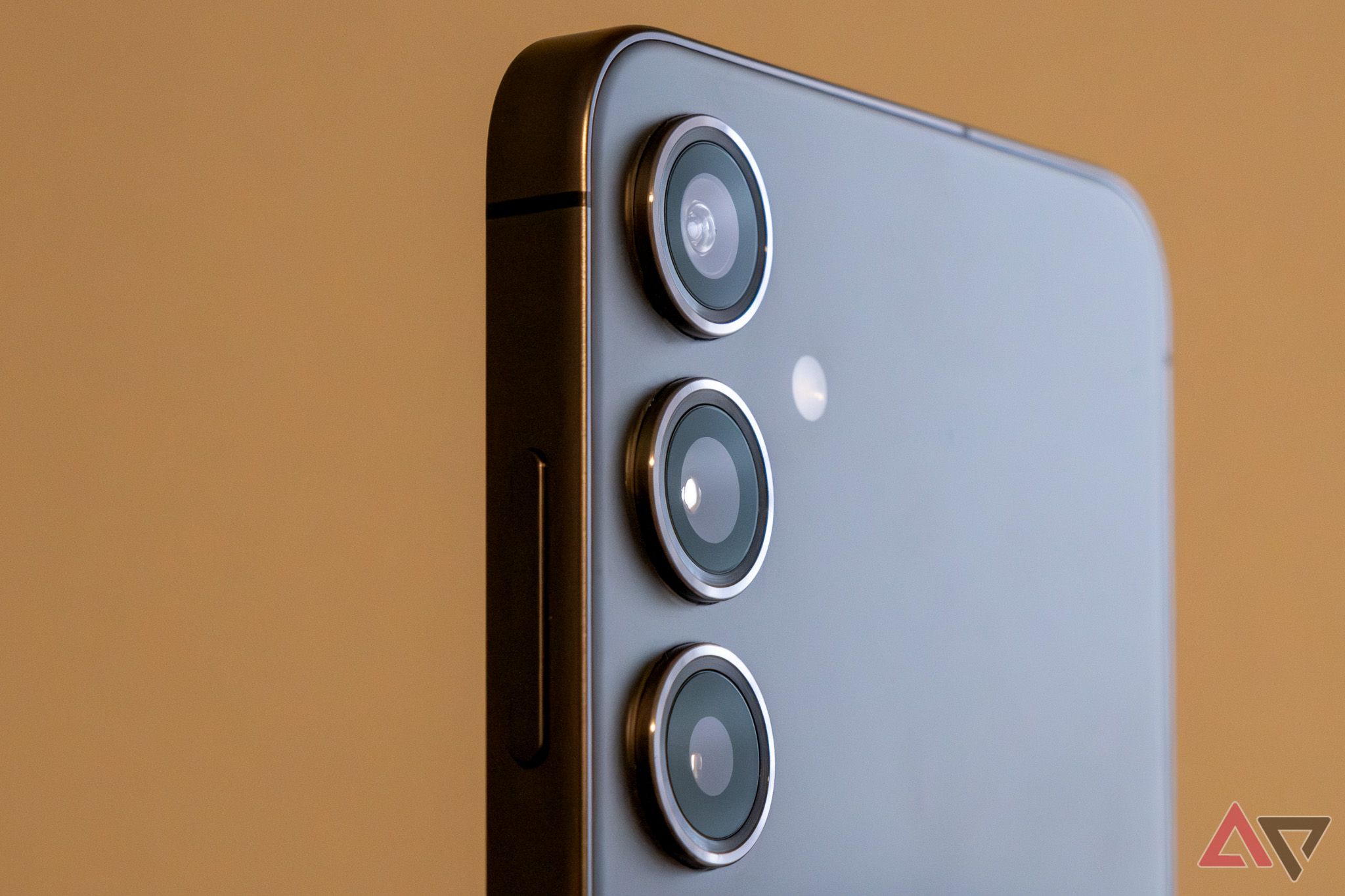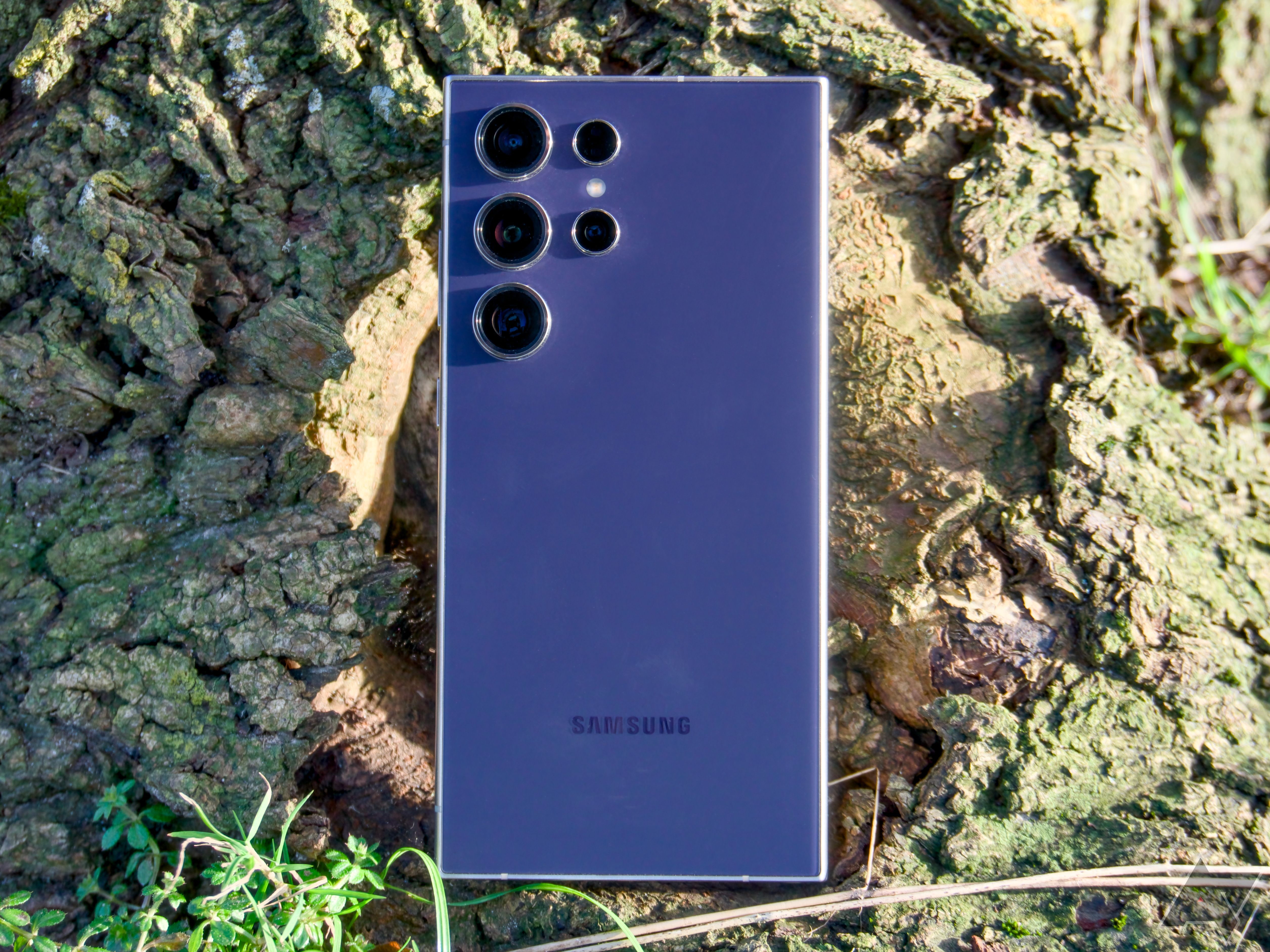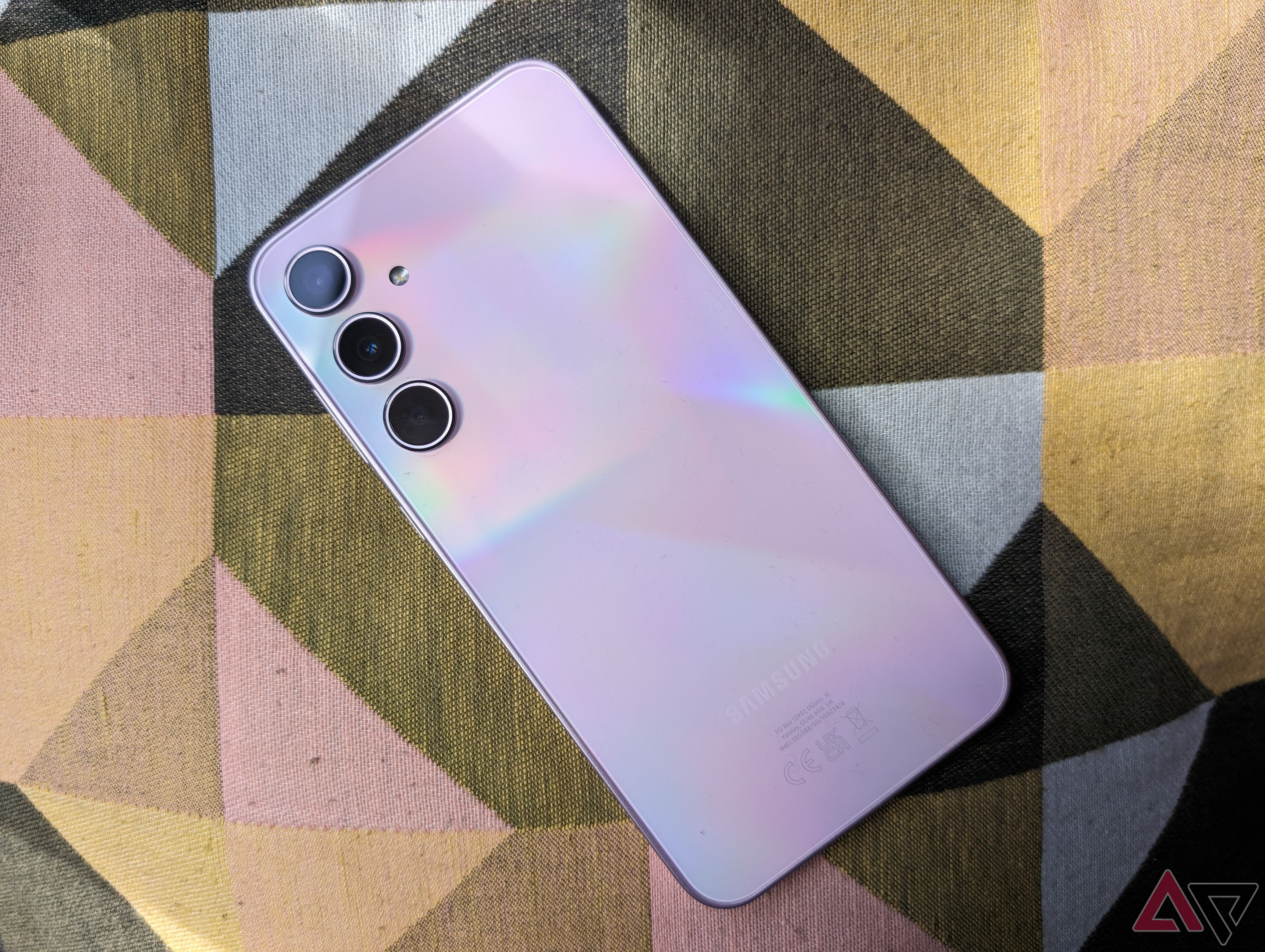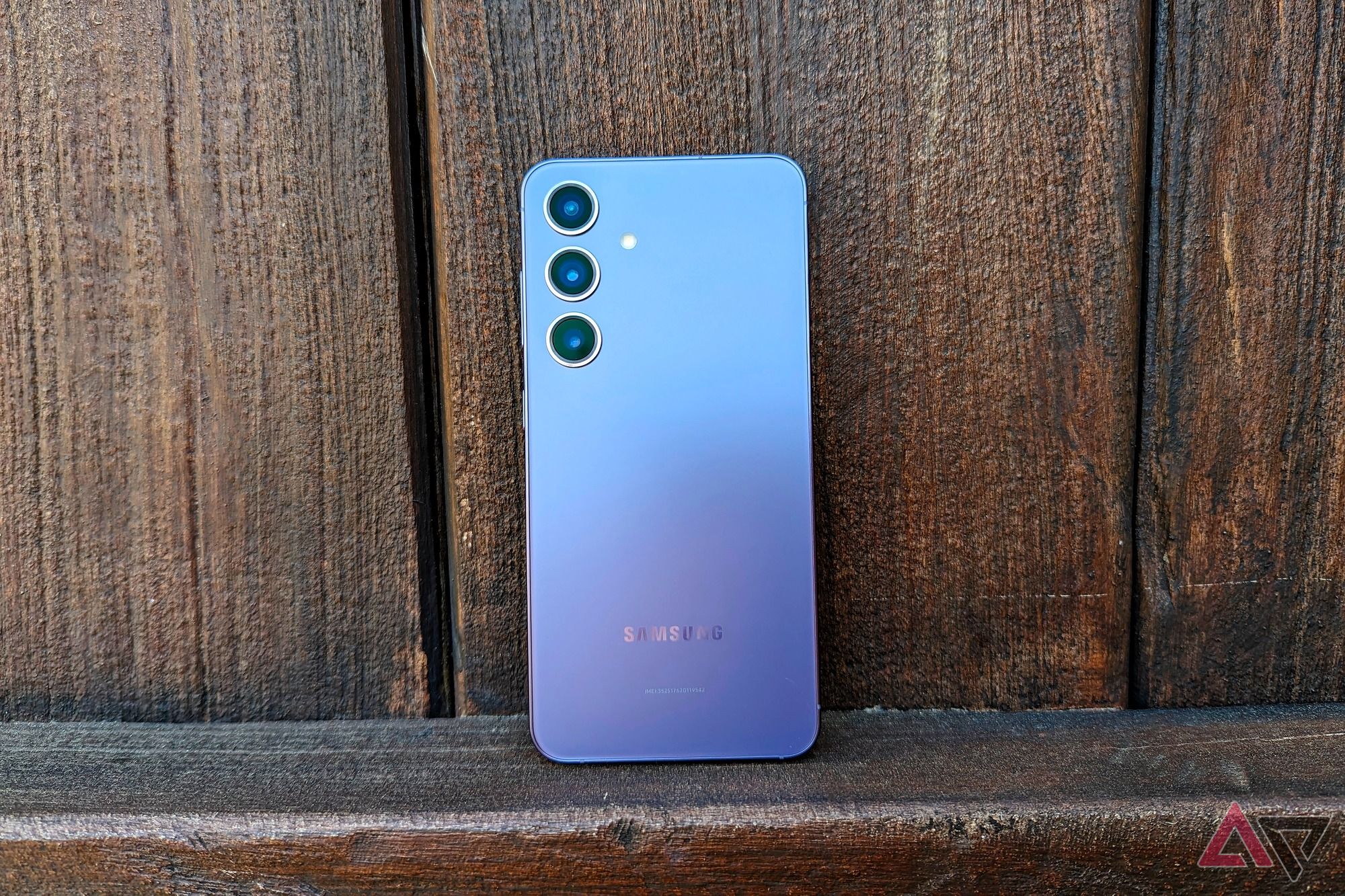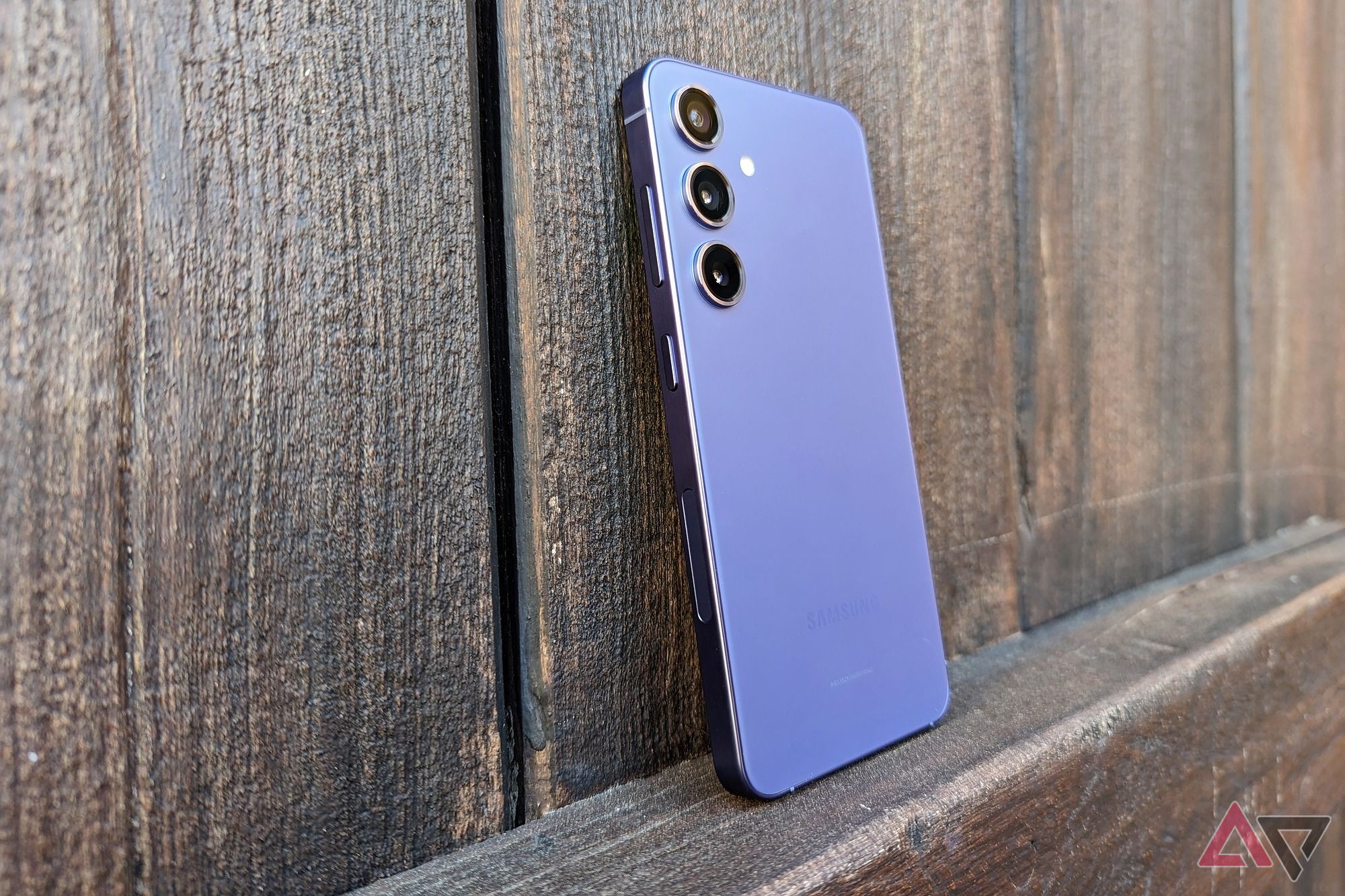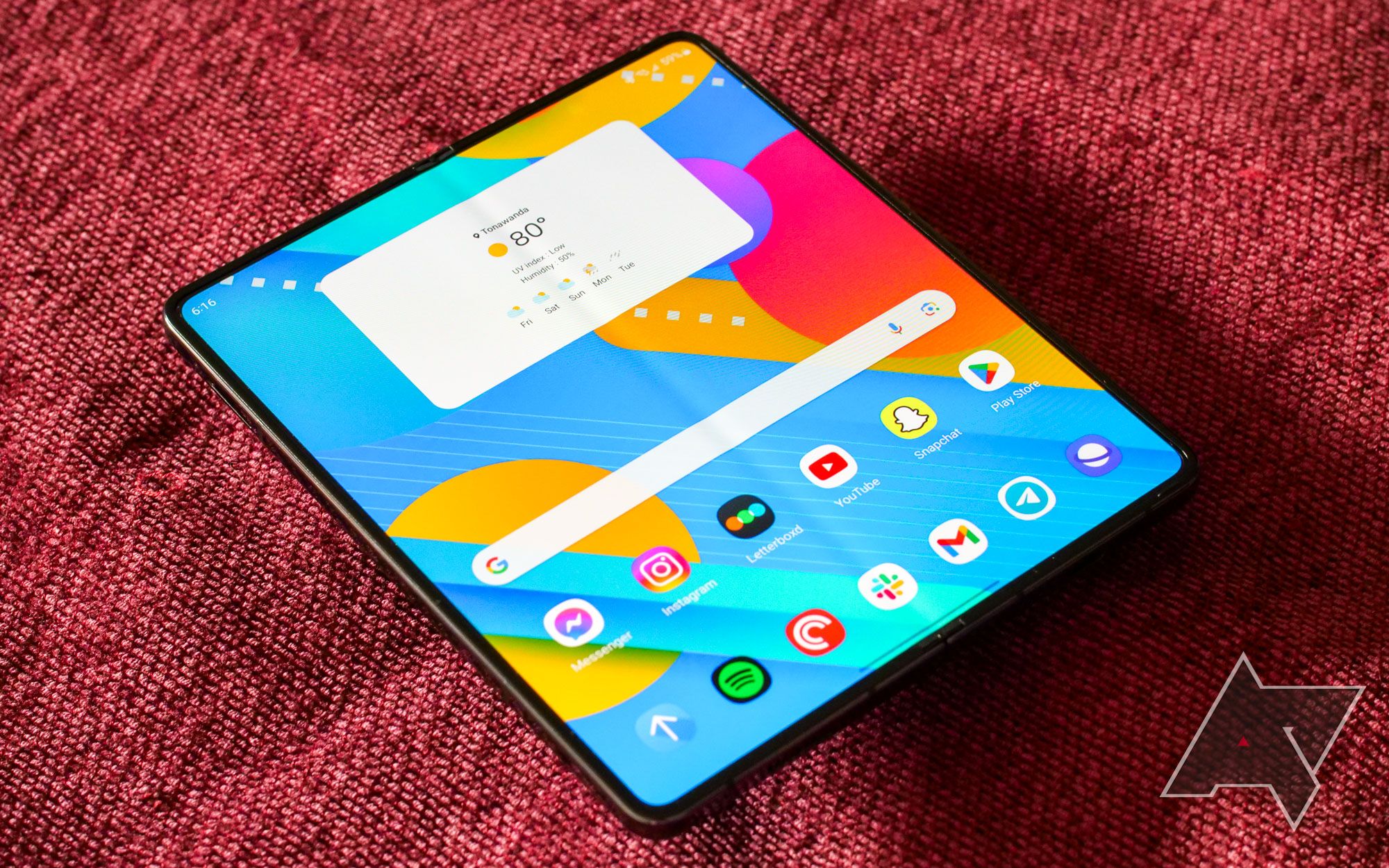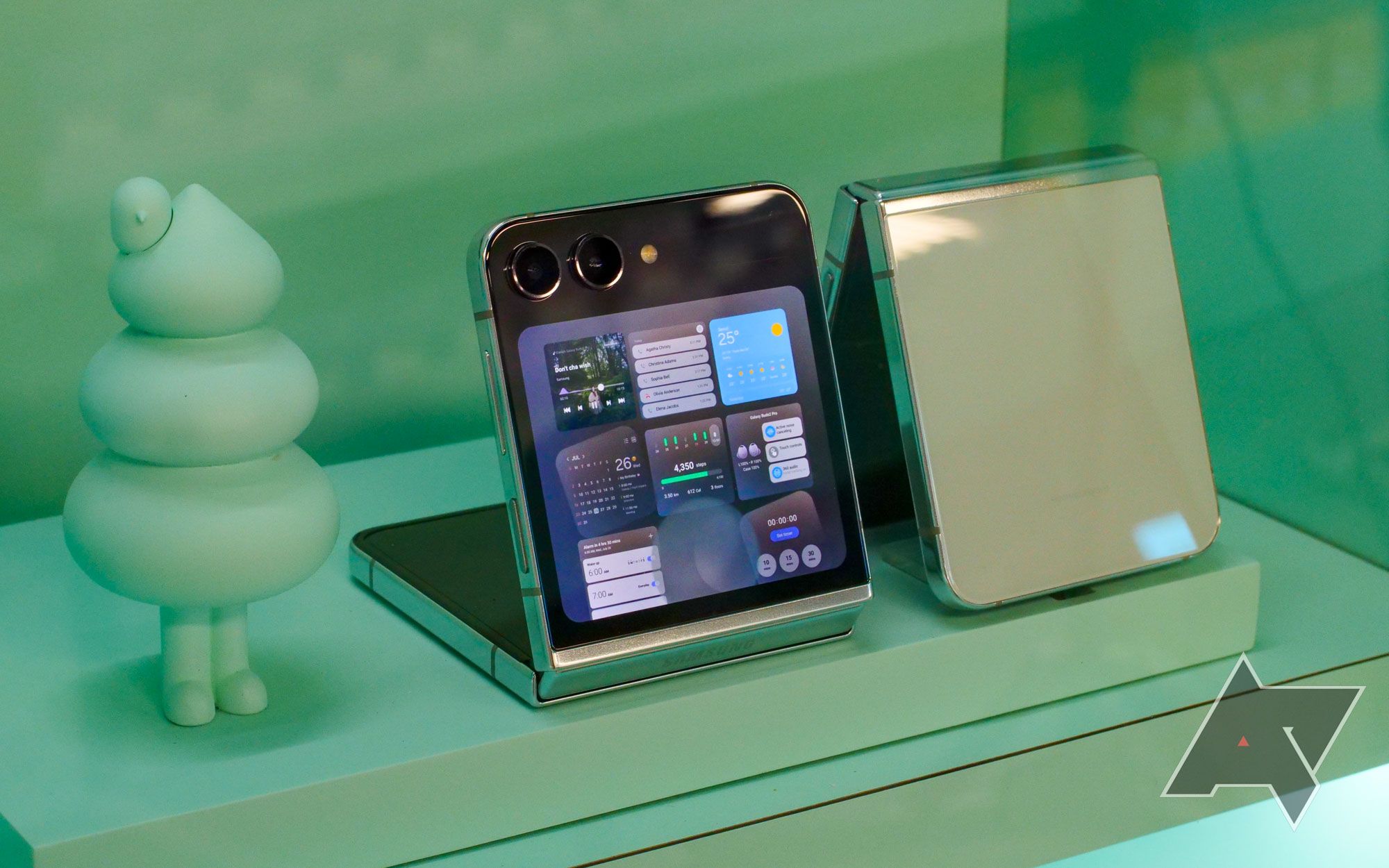Samsung always offers a broad lineup of phones, including the A series, S series, FE range, and foldables, and they’re all vying for your attention, so it can be overwhelming to choose. Thankfully, we’ve put the work in to test these devices to help you select the right one. So, whether you’re here for the best Android phone available or a more wallet-friendly option, there’s a Samsung phone that will meet your needs.
The Galaxy S24 series is the new hotness right now, boasting beautifully bright displays, fast processors, and more AI features than you can dream of, which may or may not be a good thing depending on who you are. The Galaxy A15 and A25 were recently released as well, but we haven’t included them on this list as we haven’t tested them yet. Remember, our recommendations are based on experience, so until we’ve had time to put those phones through their paces, we won’t recommend them.
Samsung’s top Galaxy phones
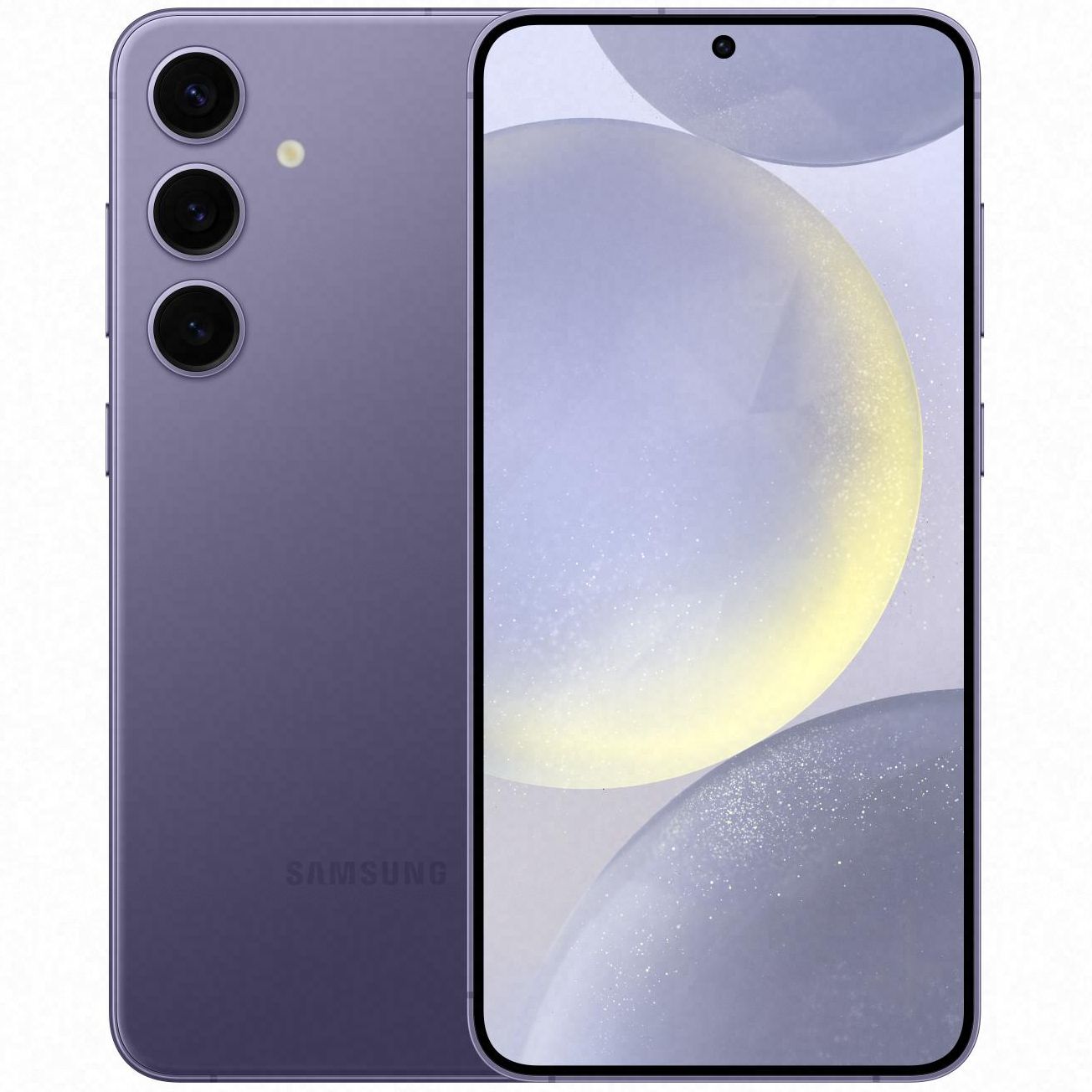
Samsung Galaxy S24+
The middle child is also the favorite
The Galaxy S24+ might lack the S Pen and fancy zoom of the S24 Ultra, but it packs some serious upgrades over the S23+ from last year. The battery is almost as big as the Ultra, clocking in at 4,900mAh. Combine that with the Snapdragon 8 Gen 3 and you have a phone that can last all day while breezing through anything you throw at it.
- Brighter, sharper display
- More RAM
- Larger battery
- Same cameras as last year
- Aging design
- Exynos 2400 outside of the US
The Galaxy S24+ gets the biggest upgrades this year. The display is 6.7 inches, despite being mostly the same size as last year, and the resolution has been bumped up to 1440p, although you have to enable that in settings. Other improvements will make a noticeable difference to battery life and performance, with the RAM being increased to 12GB instead of 8GB, and the battery is now 4,900mAh, only 100mAh smaller than the S24 Ultra. Our review of the S24+ calls it the one to buy, and it’s easy to see why.
Those on-paper specs translate to a great experience in the real world. One UI 6.1 makes some welcome changes to Samsung’s software skin, from tiny quality-of-life improvements to new ways to use Google Search. Speaking of software, Samsung has decided to match Google, promising seven years of OS upgrades and security patches for the S24 series. That means this phone will be updated through to 2031 when Android 21 is released.
The cameras largely mirror last year, with the same 50MP primary camera, 10MP 3X telephoto, and 12MP ultrawide. These cameras aren’t bad by any means, but they haven’t changed in several generations and are starting to fall behind phones from other brands.
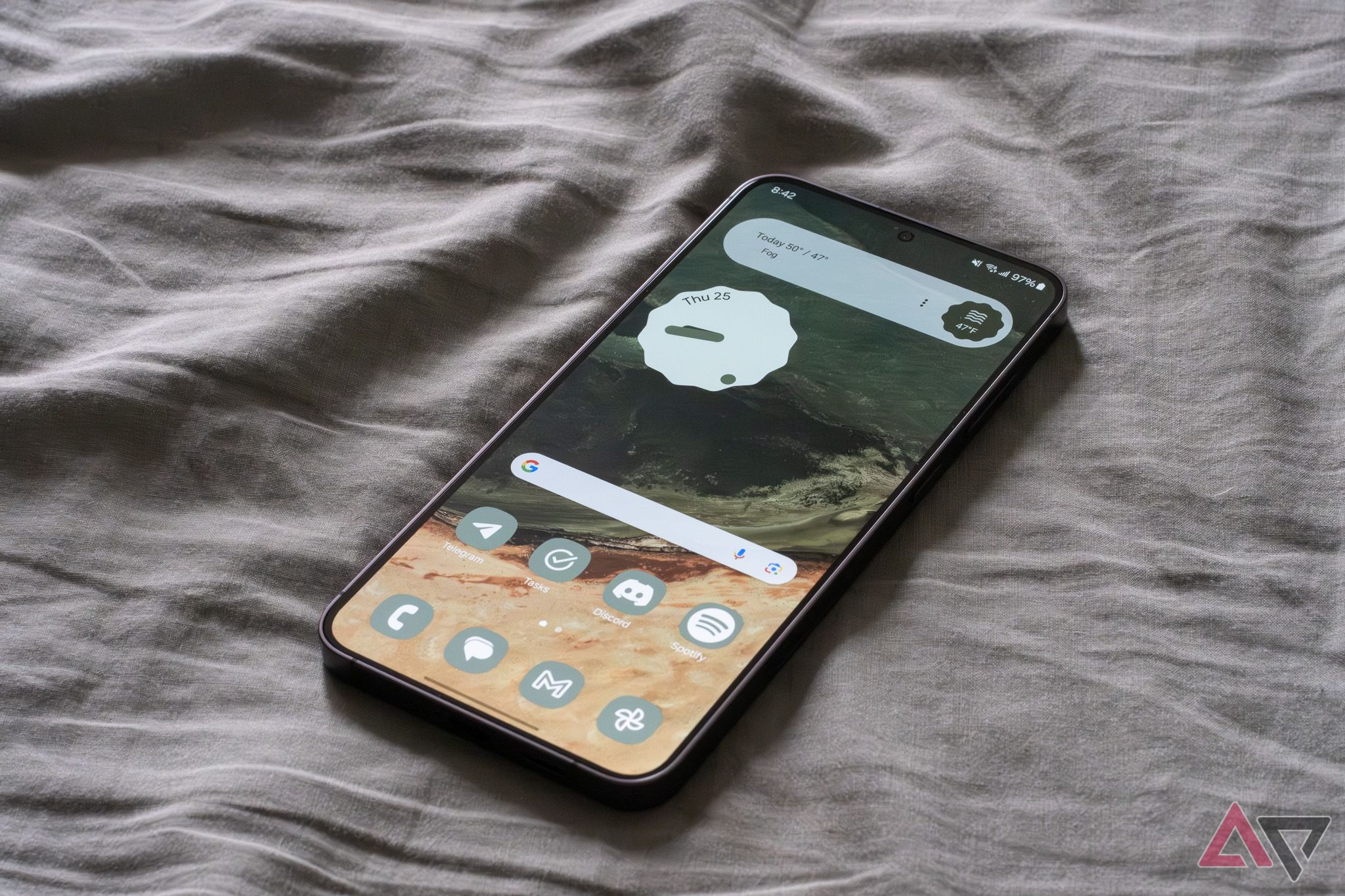
Samsung Galaxy S24+ review: A safe bet
AI gimmicks aside, this is a very easy-to-recommend flagship
Battery life takes a big leap thanks to the larger cell. It lasts almost as long as the S24 Ultra, so unless you spend all day gaming on 5G with the brightness maxed out, you won’t kill it before bedtime. If you do want to do that, though, the phone will be more than capable. The new 1440p display reaches a ridiculous 2,600 nits, and it can now vary its refresh rate from 1 to 120Hz, so it’s more efficient than before. The Snapdragon 8 Gen 3 is also shaping to be an excellent chip, and combined with 12GB of RAM and at least 250GB of UFS 4.0 storage, this phone is lightning fast. We should note, however, that outside of the US, the S24+ uses an Exynos 2400. We haven’t had any hands-on with that chip, so we can’t comment on how it performs.
The battery can be recharged at 15W wirelessly and 45W over USB-C, so long as you have a compatible PPS brick.
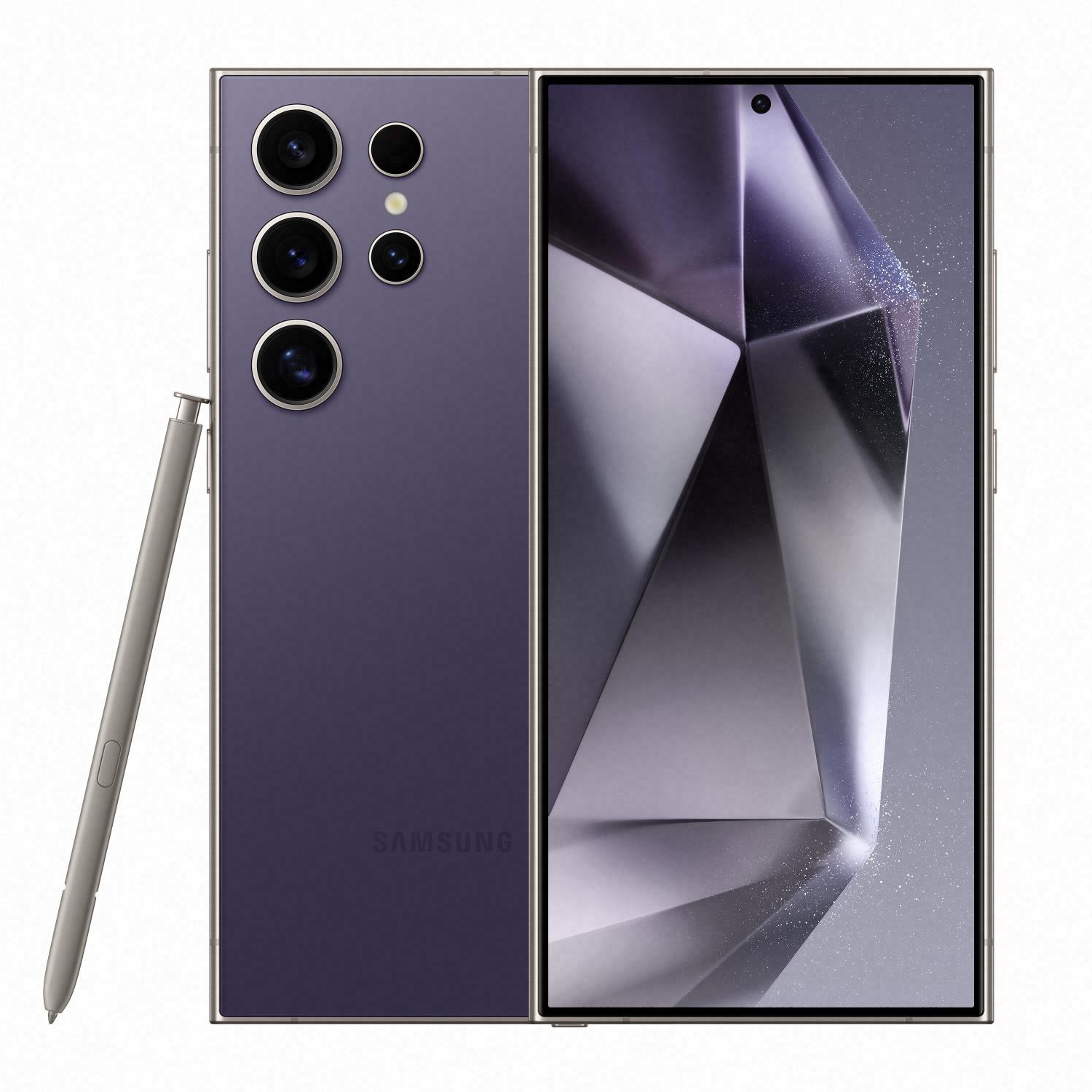
Samsung Galaxy S24 Ultra
Finally flat
The S24 Ultra is an incremental upgrade over last year’s phone, but the changes are good ones; this is the best version of Samsung’s Ultra flagship yet. The new 5x 50MP telephoto takes better photos across all zoom levels, and the flat display is welcome, especially for those of us who use the S Pen extensively.
- Flat display with anti-reflective coating
- Imrpoved 5X telepoto lens
- Snapdragon 8 Gen 3 in all regions
- Aging design
- $100 more expensive in the US
The Galaxy S24 Ultra is the best Ultra Samsung has made yet. There are upgrades here, but all foibles have been carried over with the now-aging design. The cameras are fantastic for taking photos of scenic landscapes and static objects, but they still struggle with movement. This has been a problem for half a decade now, and there’s no excuse for it.
Thankfully, the rest of the phone is mostly positive. The new 50MP 5X telephoto is better than the old 10X ever was. The problem with previous phones was the lack of quality between 3X and 10X, which this fixes, still taking better photos than the old 10X lens through to 30X.
When the S20 and S21 Ultra came out, they started with 12GB of RAM. The S22 and S23 Ultra lowered that to 8GB and made you pay for increased storage to get the extra RAM. Samsung has reversed that decision now, and all S24 Ultra models have 12GB of RAM. The phone also follows in the S23 Ultra’s footsteps by using the Snapdragon 8 Gen 3 worldwide, unlike the smaller S24 and S24+ that use the Exynos 2400 internationally.
Battery life is slightly better than last year thanks to improved efficiency from the display and chipset, but it’s not groundbreaking as the battery size is the same 5,000mAh.
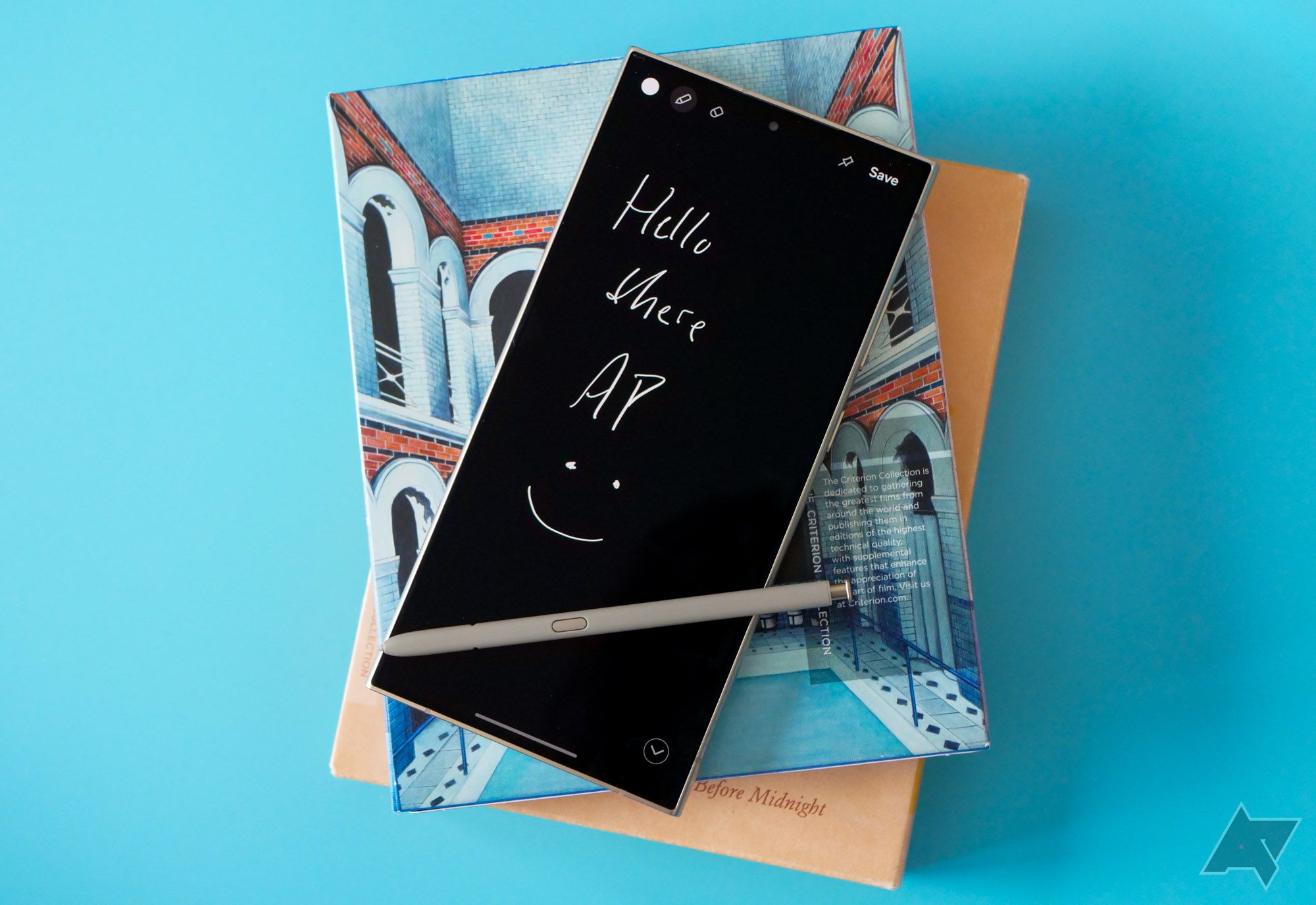
Samsung Galaxy S24 Ultra review: Still the best, unless you take photos
Without any meaningful changes, Samsung’s latest phablet feels like a do-over for last year’s smartphone
The display is flat this year, a welcome change for those of us who like glass screen protectors and use the S Pen extensively. Its new Gorilla Armor Glass has a new party trick — it’s 75% less reflective than conventional tempered glass. There’s a notable difference. The display maxes out at 2,600 nits; but in direct sunlight, I can easily turn the brightness down to 75% thanks to the lack of reflections, something I’d never do on anything else.
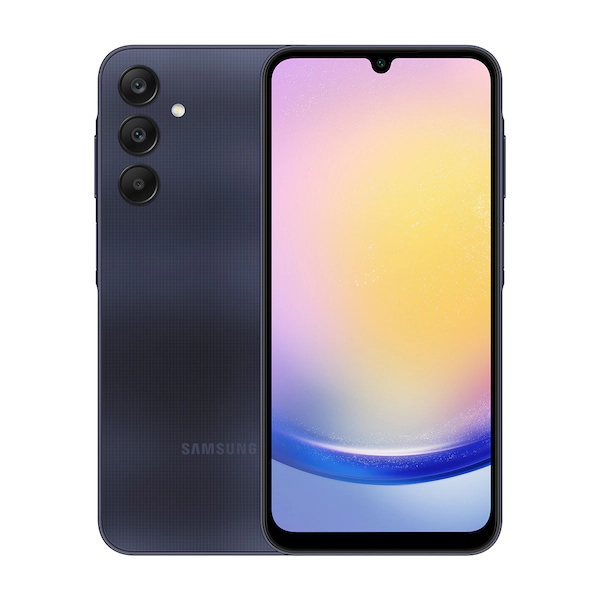
Samsung Galaxy A25 5G
Making all the right compromises, with few major drawbacks
After skipping a generation, Samsung’s upper-entry-level A20 series finally hits the US again. It offers Samsung’s characteristically great software, and packs just powerful enough hardware for a smooth day-to-day experience. It even boasts premium features like an OLED screen and four years of Android updates.
- Cameras work better than anticipated
- An OLED panel on a budget phone?!
- One of the best values of any brand
- Annoying bezel and notch designs
- Not particularly powerful
Typically, spending $300 on a phone means you should prepare yourself for some pretty big sacrifices. But Samsung did a great job qith the Galaxy A25 by cutting the corners it needed to keep the price low, but still delivering a competent device that should satisfy less picky consumers who don’t want to shell out for an S series.
Its FHD+, 120Hz, 1,000-nit OLED display is one especially satisfying feature, and you’ll rarely find similarly priced phones that look as good. The cameras also perform great for the cost, with a good level of detail and capable image processing, although it does lack the AI tools its more costly relatives boast.
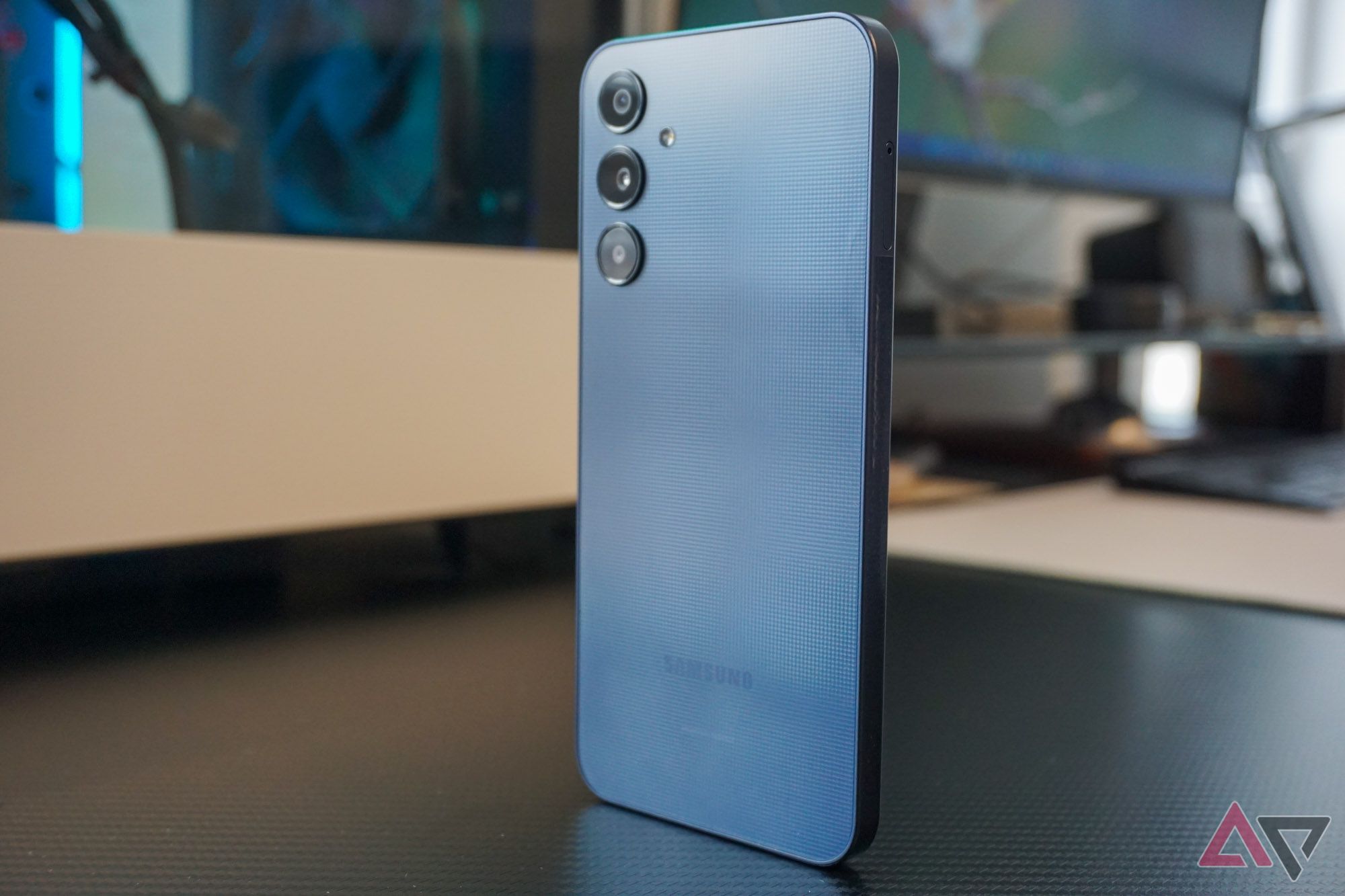
Samsung Galaxy A25 5G review: Better than budget
At this point, Samsung’s cheap phones can’t get much more reliable
With that said, you won’t mistake this for an S series like you might one of the upper-tier A series Galaxys. In particular, it not only retains the somewhat invasive notch from phones of years past, but also a frustratingly off-center bezel and screen arrangement. Considering how the overwhelming majority of smartphone involves looking at the screen, it’s disappointing Samsung couldn’t line up the panel and body better. But as long as you’re not super picky, you’ll probably get used to it.
The rest of the specs and experience aren’t terribly surprising; the Exynos 1280 SoC won’t impress anybody coming from a Snapdragon-powered Samsung, and it plus the 6GB of RAM limit multitasking and resource-intensive app use considerably. But for a pure smartphone experience, it’s hard to top the A25’s value for the money.
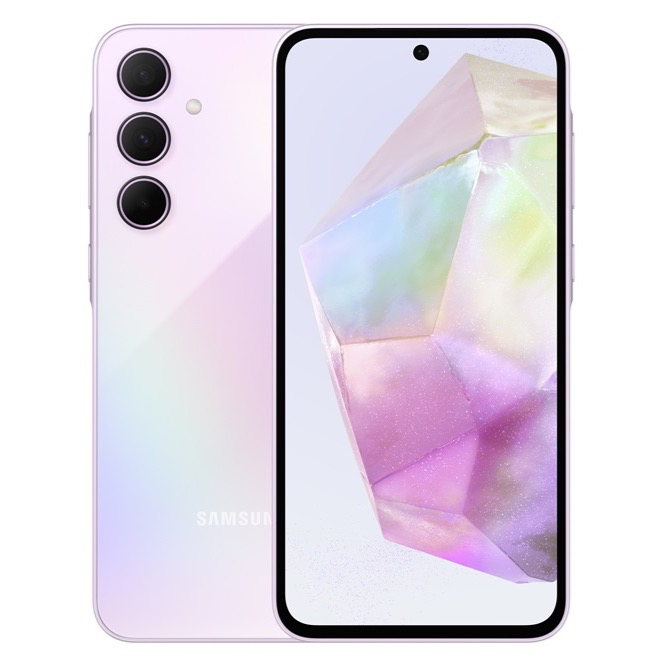
Samsung Galaxy A35
Essentially a retread of the A54 — and that’s a good thing
The best non-S series you can buy Stateside, the Galaxy A35 has all the power and UI considerations the average person needs, and eschews the high price they don’t. It’s nearly identical to last year’s Galaxy A54, but $50 cheaper, and it looks almost exactly like its flagship cousins.
With Samsung neglecting to release the Galaxy A55 in the US, midrange phone users are left with the A35 as an alternative. It’s not really a huge blow, since the $400 midranger sports powerful enough hardware to last through its 4 years of Android updates and 5 years of security patches with little issue.
This thing looks a lot like the Galaxy S24+
To be clear, it probably won’t satisfy people long used to flagship phones, but it wasn’t meant to. It offers plenty of screen space, decent performance, a shockingly good screen, and even respectably capable cameras. And while it does tend to get warm and even throttle due to overheating at times, it actually does so a little less than the A54, so credit to Samsung R&D for that.
Samsung’s image processing isn’t perfect — and the A35 lacks any kind of AI-like editing features — but the camera hardware does start off on the right foot. We didn’t have much trouble getting quality shots in good lighting, but once things start to dim (or even just get cloudy) it might take you an extra snap or two to get the results you want. That’s not the end of the world, but a lot of us have been spoiled by the immaculate point-and-shoot capabilities of phones like the Pixel 8.

Samsung Galaxy A35 review: How to compromise effectively
If you don’t expect much, it’s great
So while it isn’t particularly exciting, the A35 is clearly one of this year’s best midrange phones. It improves significantly on its A33 and A34 predecessors, and competes directly with last year’s A54, but at a lower price. As long as you don’t demand peak performance and AI mastery from your phone, it’s a perfectly cromulent choice.
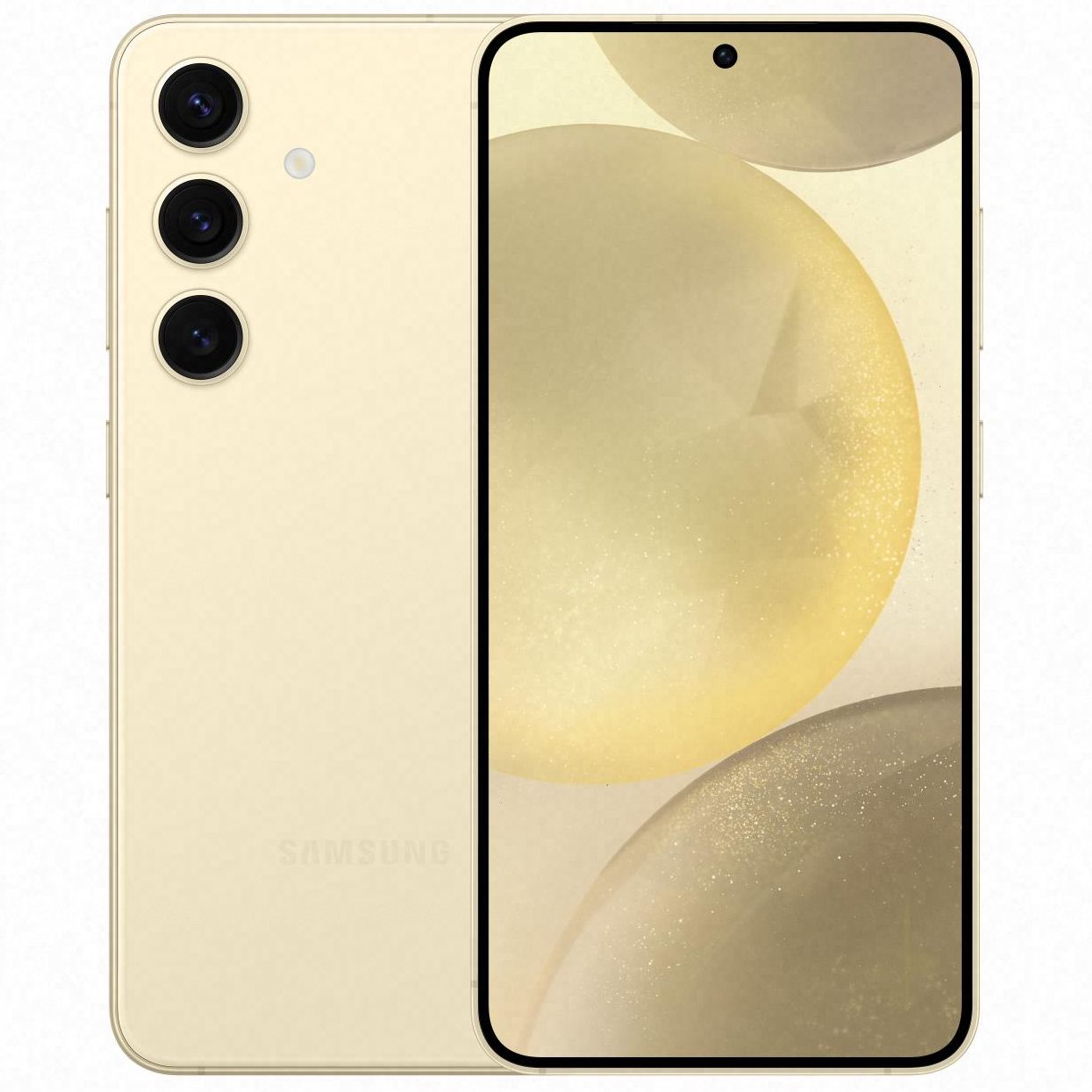
Samsung Galaxy S24
Phenomenal power, small design
The Galaxy S24 hasn’t changed much from last year, but there are still improvements to be mildly excited about. The display can now dynamically change its refresh rate from 1 to 120Hz vs the 48 to 120Hz of its predecessor. That, combined with a slightly larger battery and more efficient chip, leads to a more manageable battery life.
- Brighter display
- Larger battery
- Larger screen in the same sized phone
- Aging design
- Only 8GB of RAM
- 128GB base storage
The Galaxy S24 is the pocket flagship many would have you believe died years ago. The S24 packs a 6.2-inch display into a frame that’s only 2mm taller than the Asus Zenfone 10, which settles for a 5.9-inch screen. That screen is backed up by flagship specs as well, although there are some caveats.
The display is still 1080p, but it’s more efficient now. It can adjust its refresh rate from 1 to 120Hz versus the 48 to 120Hz from last year. That means it’ll sip power when sitting on the always-on display or when you’re watching a 30fps video. The screen is brighter this year as well, reaching 2,600 nits, while the S23 maxed out at 1,750. It’s a shame the S24 and S24+ are missing the anti-reflective glass we find on the S24 Ultra, but at least they’re bright enough to be more than usable in even the harshest of sunlight.
As with the S24+, the cameras are good, but not class-leading, which is a shame. Hopefully, after this many years with the same optics, the S25 will shake things up. Performance is good on the S24 thanks to the Snapdragon 8 Gen 3, but international models use the Exynos 2400, which we haven’t tested. The S24 didn’t see any RAM or storage upgrades, sadly. It’s only available with 8GB of RAM, and the 128GB still uses UFS 3.1, stepping up to UFS 4.0 on the 256GB model. If you want more than 256GB, you’ll need an S24+.
Battery life is a pleasant surprise. The battery grows from 3,900mAh to 4,000mAh, which offers a meaningful uplift when combined with the more efficient display and processor. Sadly, charging is still limited to 25W. It’s not intolerable with a battery this small, but it lags far behind what other OEMs are offering.
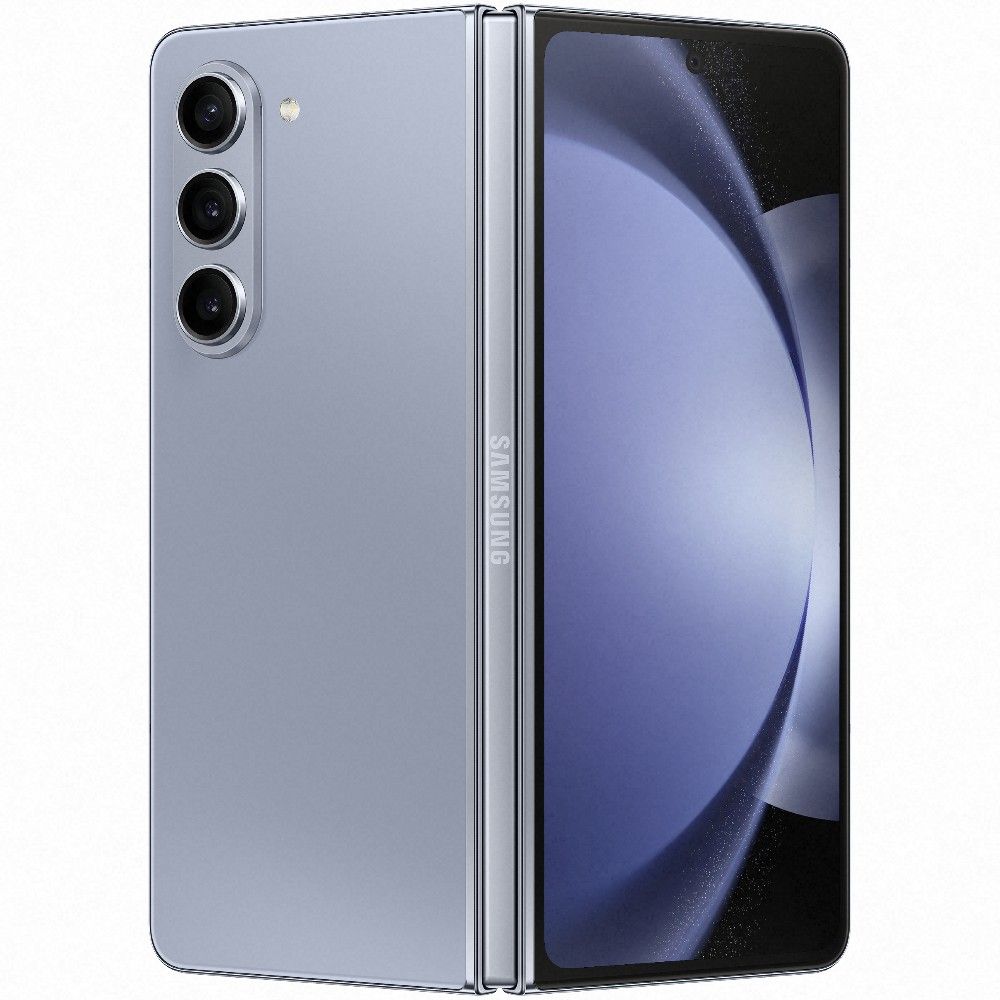
Samsung Galaxy Z Fold 5
The foldable to beat
Samsung won’t win any awards for innovation with the Galaxy Z Fold 5, but if you’re looking for a reliable foldable, this is the one to buy. This year’s device takes everything we liked in last year’s model and upgrades it with a thinner, lighter chassis, bringing it closer than ever to the size of a standard phablet.
- Thinner and lighter than ever
- One UI is excellent on foldables
- Good battery life
- No new sensors
- Design is feeling outdated
- Slow charging speeds
If you thought the Galaxy S23 Ultra was an incremental upgrade, the Galaxy Z Fold 5 makes it look like a revolution. While Samsung’s Note replacement came packed with new camera tech and a meaningfully refreshed processor, the Z Fold 5 only makes a couple of small leaps ahead of its own predecessor, the most significant one being the removal of the gap in the display hinge. This tweak results in a significantly slimmer 13mm chassis, a difference you’ll truly notice in everyday use, particularly when slipping it into your pocket.
Otherwise, you won’t find much more than iterative, by-the-numbers changes here. The overall design and the ultra-narrow 6.2″ outer screen remain largely unchanged, practically nudging you to unfold the device for serious tasks. The camera lineup is unchanged, though some improvements to Samsung’s processing seem to deliver slightly better results compared to last-gen if you’re willing to pixel peep. Powered by the latest Snapdragon 8 Gen 2 chip, similar to the S23 line, the performance and battery life upgrades from the 2022 model’s Snapdragon 8+ Gen 1 are not significant.
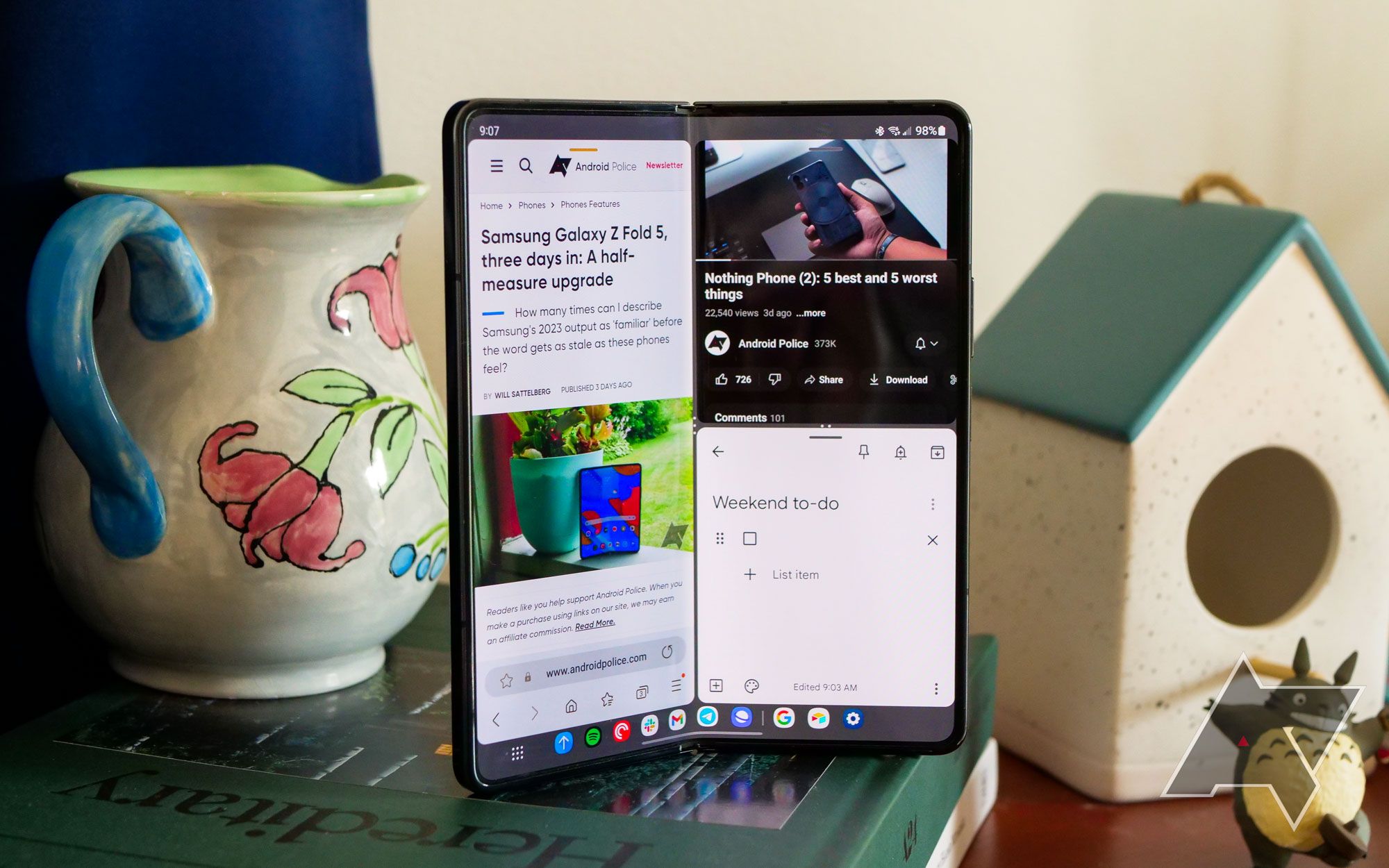
Samsung Galaxy Z Fold 5 review: Polished to a sheen
With more competition than ever before, Samsung chooses to coast
Given these nuances, the Z Fold 5 might not convince Z Fold 4, or even Z Fold 3 users to upgrade, especially with competitors like OnePlus Open outshining it in several aspects. Yet, features like an IP68 rating, wireless charging, and Samsung’s reputable after-sales support make the Z Fold 5 an appealing choice for those venturing into the world of foldable phones for the first time.
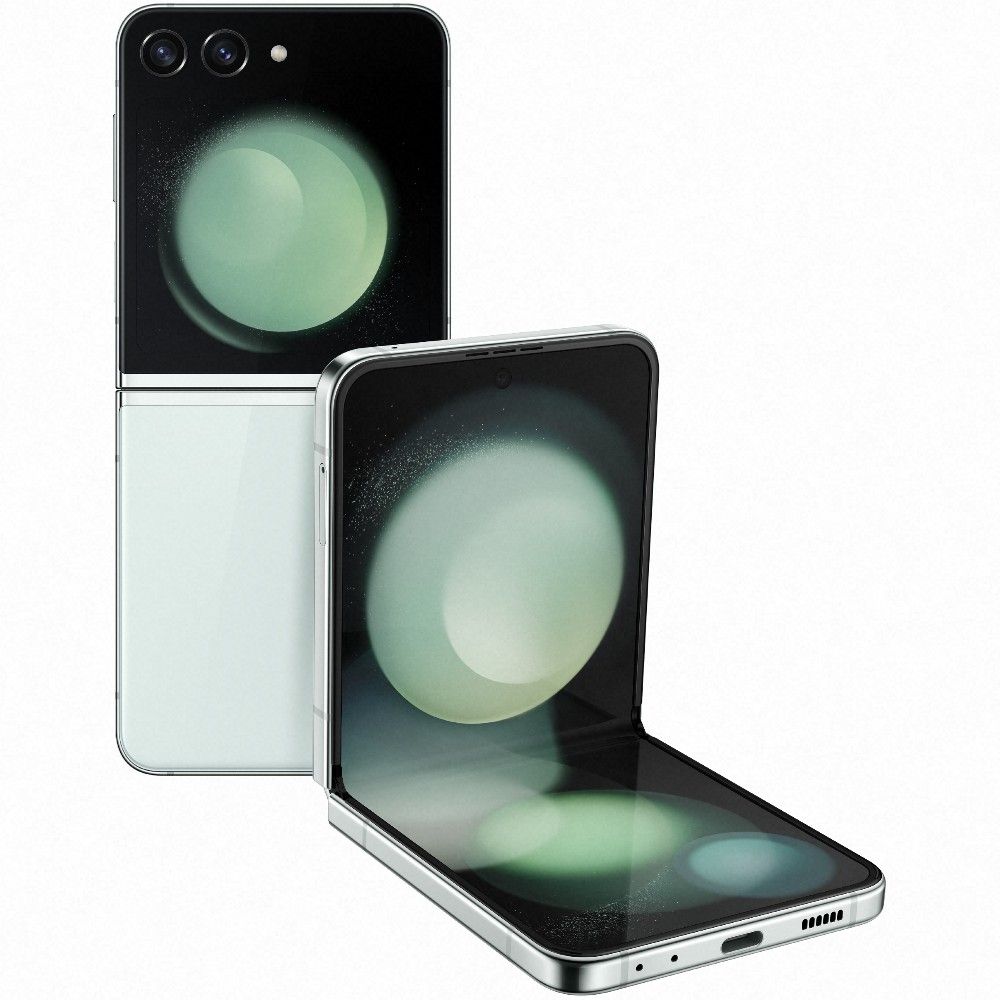
Samsung Galaxy Z Flip 5
The small phone with double displays
You can keep your folding tablets; the Galaxy Z Flip 5 is a foldable phone that’s a reasonable price, a captivating size, and super fun once you get a good case on it. This phone will fit into any pocket you own, including the front shirt pocket, and is more useful than ever thanks to a larger external display that can even run a few full apps.
- Fun form factor
- Speedy performance
- Larger, more useful cover screen
- The cameras aren’t the best
- Still a bit expensive
The Galaxy Z Flip 5 is Samsung’s more affordable foldable phone, although you’d never call it cheap. Unlike the Fold 5, it has had a bit of an overhaul this year, with an all-new external display that fills most of the phone’s front side and is now large enough to offer a keyboard and even run a limited selection of full Android apps. That means that, in addition to the old widget and selfie options, you can send text messages, watch videos, or navigate with Google Maps, all without ever opening the phone.
The Flip 5’s hamburger-style folding screen means it’s more or less a normal phone when it’s open and an eminently pocketable little square when it’s closed. It also benefits from similar hinge upgrades to the Fold 5, closing flat for a thinner and more durable device.
There are downsides. Samsung hasn’t touched the cameras, meaning you get the same mediocre pair of main and ultrawide lenses as before, though computational upgrades deliver some slight improvements to photos despite that. It’s a similar story with the battery, which is still smaller than your average flagship phone, though the added efficiency of the Snapdragon 8 Gen 2 chip helps a little there.
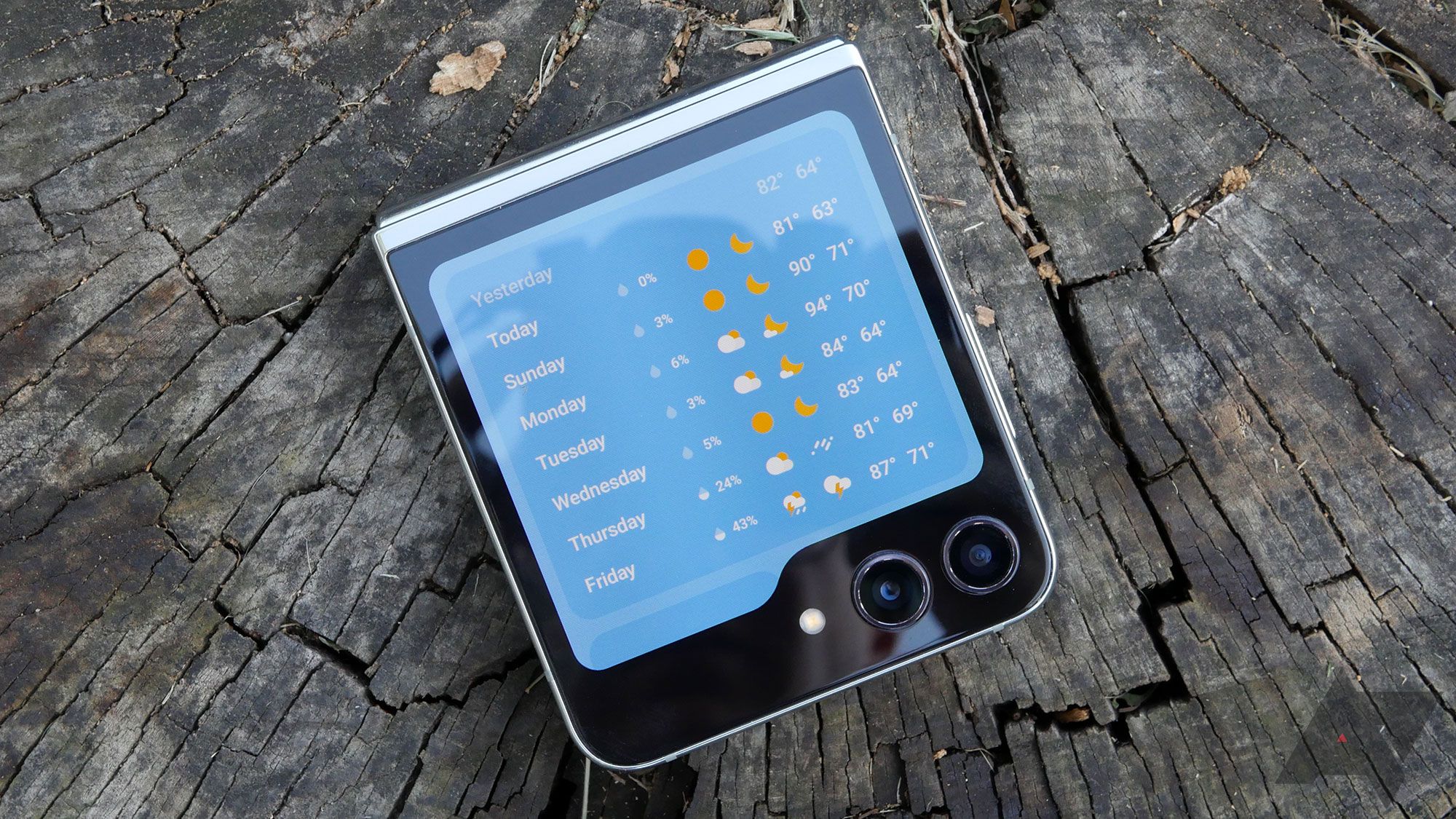
Samsung Galaxy Z Flip 5 review: Flex Window for the win
A slightly larger cover screen makes all the difference in the world
If you can live with a midrange camera and a battery that demands a daily charge, it’s hard to deny that the Flip 5 is extremely cool. You’ll be paying a premium compared to picking up another Samsung phone, but none of those other phones fold in half — well, not more than once, anyway.
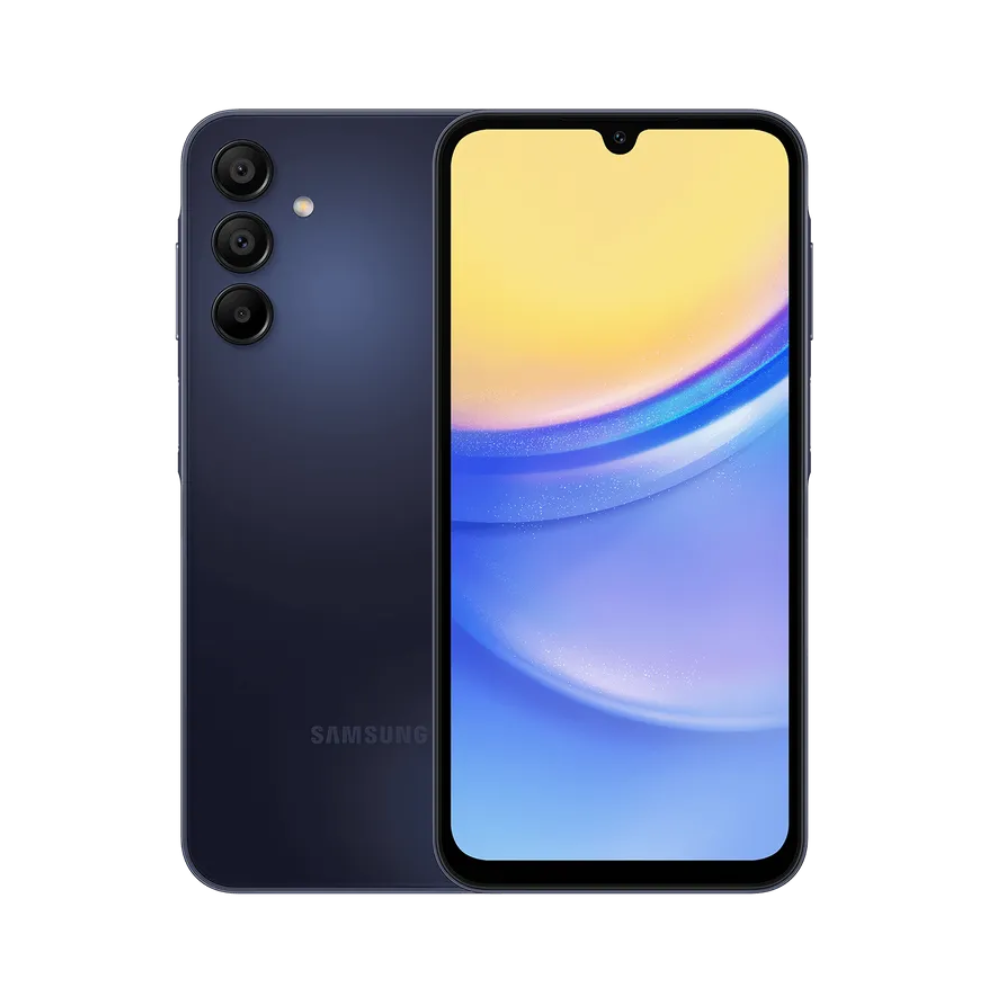
Samsung Galaxy A15 5G
A barebones device delivering an acceptable experience
It’s not fancy, it’s not fast, it doesn’t have cutting-edge AI features, but the Galaxy A15 is as good as you can get for $200. Despite significant cost-cutting measures inside and out, it offers reasonable performance for people who don’t put their phone through a lot of heavy use.
- Price is almost impossible to beat
- Works for basic, day-to-day tasks
- Gets Samsung’s 4-year Android/5-year security update plan
- The main camera is pretty good
- Mediocre performance
- Subpar low-light and ultrawide images
- Useless macro lens
As long as you keep your expectations in check, the Galaxy A15 5G absolutely lives up to its $200 price. You won’t find many others this cheap with a 90Hz, FHD+, 800-nit screen that actually works OK. And the MediaTek Dimensity 6100+ powering it, while worlds below the flagship class, isn’t a ton slower than the Exynos 1380 that does a fine job in Samsung’ midrange models.
Heck, even the cameras are considerably better than we’d expect from this price range. Or, the camera, we should say, because the primary lens is the only one we got consistently good results from — but they were, nonetheless, quite good (in the right lighting, at least).
The A15 has everything a basic phone user needs. That includes microSD expansion, a big battery and efficient hardware, a headphone jack, NFC connectivity, and even sub-6 5G support. It is limited to 25W charging, but so are most Samsung phones, and it’s hardly any slower than the company’s 45W spec, anyway.
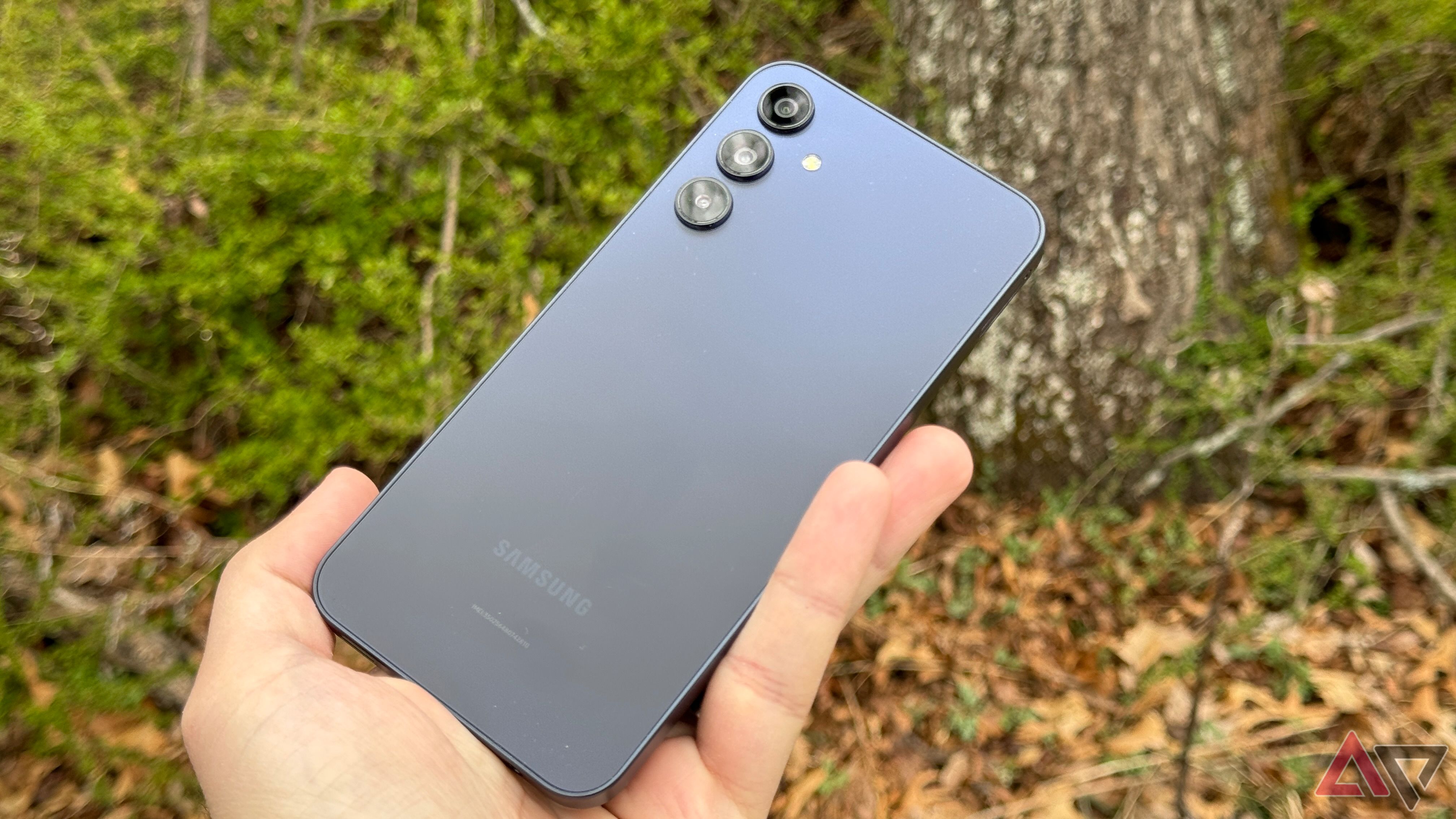
Samsung Galaxy A15 5G review: Everything you need for only $200
It’s not flashy, but the A15 gets the job done for people who don’t read reviews or care about specs
If you plan on doing anything other than basic tasks on your phone, steer well clear of the A15. But if you just need a reliable device with a straightforward interface and long, reliable lifespan, at an impressively low price, it’s hard to pass up. Amazingly, it’s even slated to receive new OS versions through Android 18, and security patches for at least a year after that. Despite its poor SoC performance and piddly 4GB of RAM, it’s a capable way for those on a budget to stay connected.
Why do people like Galaxy phones so much?
Samsung isn’t the leading Android manufacturer just because of its marketing. There are quite a few objective and subjective reasons why it sells more phones every year than any company not named after fruit:
- Reliable hardware and build quality: As the industry leader, Samsung has the resources to ensure its quality assurance is top-notch.
- The OneUI Android interface: This is a subjective one, but Samsung’s software implementation gets high marks from longtime experts and consumers of all kinds for its intuitive layout, extensive feature set, and high degree of customizability
- Versatile multitasking features: Among the productivity-focused tools within OneUI is Samsung DeX, which essentially turns your phone into a tiny, ARM-powered desktop PC when you connect the right peripherals
- Samsung Smart Tags: Given Galaxy phones’ popularity, Samsung’s relatively upstart Bluetooth tracker network showsmore promise than any other in the Android space
- AI features, and the future: Love or hate the marketing and terminology, what we call “AI” today enables a wide and expanding range of novel features that range from convenient and nice-to-have all the way to borderline mind-blowing (or creepy, to some)
- Long-term software support: A Galaxy S series devices (tablets included) now receive 7 years of Android OS and security updates, while A series phones get 4 and 5 years, respectively; Nobody but Google competes at the moment
The best Samsung phone for you
The Galaxy S24+ and S24 Ultra are our top recommendations this year. The S24+ saw a huge upgrade to its display and battery. The S24 Ultra has a lot to offer with the S Pen, 200MP primary camera, and 50MP 5X telephoto, but it’s hard to justify the $300 difference over the S24+ if you aren’t an avid S Pen user. Both phones have some of the best displays you’ll see, offer seven years of OS updates and immaculate build quality.
If you want something more exotic, the Galaxy Z Fold 5 and Flip 5 are solid contenders. The Fold 5 is a tablet when you want it and a phone when you need it. It might be lagging behind other companies in terms of bleeding-edge design, but it has reliability and build quality on its side, along with everything One UI 6 has to offer. The Flip 5 manages to feel like a normal phone when open, which is no mean feat when it has to fold in half.
Until recently, we recommended the S23+ and S23 FE, but the S23+ is awfully tough to find at any kind of a discount, and categorically just not as good as the newer models. And the S23 FE, at $630, falls short of the various $500 phones that outperform it considerably. We also aren’t able to recommend the A55 since it won’t see a US release (and you shouldn’t try to import one), and the S24 won’t hit the market until July at the earliest, and possibly more like fall 2024 or early 2025.
Instead, we’ve added the December 2023 released A15, A25, and A35. In order, they’re possibly the best entry-level, budget-friendly, and midrange options today. They each even get the relatively long 4-year Android update promise that we wish other low-cost brands would adopt. If you want something highly usable at a low price, none of them disappoint — although they do face stiff competition from some of today’s other reasonably priced Android phones.

Samsung Galaxy S24+
The middle child is also the favorite
The Galaxy S24+ might lack the S Pen and fancy zoom of the S24 Ultra, but it packs some serious upgrades over the S23+ from last year. The battery is almost as big as the Ultra, clocking in at 4,900mAh. Combine that with the Snapdragon 8 Gen 3 and you have a phone that can last all day while breezing through anything you throw at it.
- Brighter, sharper display
- More RAM
- Larger battery
- Same cameras as last year
- Aging design
- Exynos 2400 outside of the US




